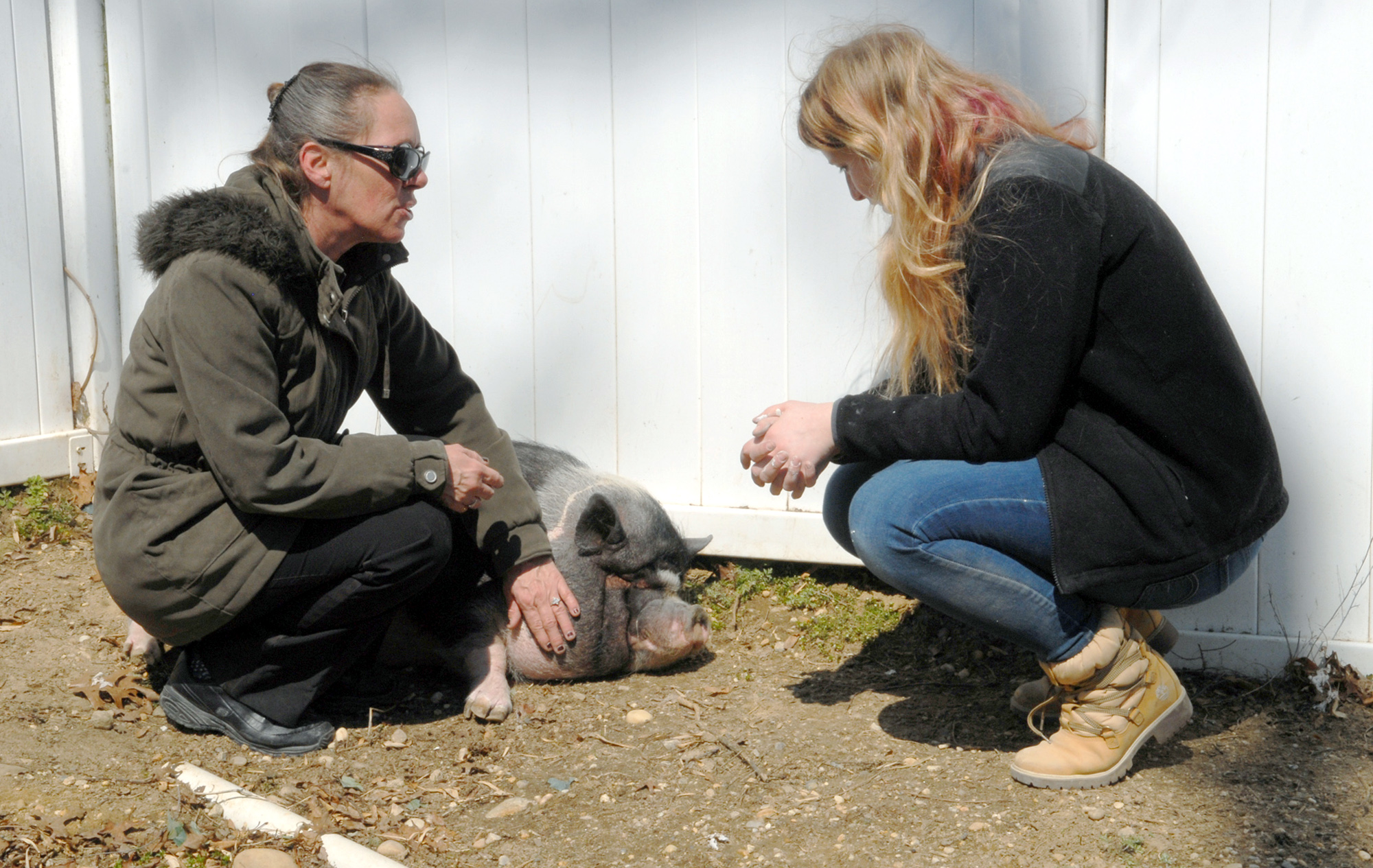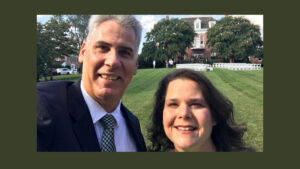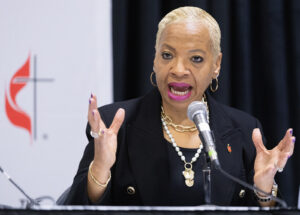
[SLIDESHOW=40169,40170,40171,40172]LONG ISLAND, N.Y. (BP) — Crawling underneath houses to put in insulation, mudding and sanding dry wall and installing a fence are not typical spring break distractions. But for college students Makayla Campbell and Amber Wilcox those were the jobs they tackled with Southern Baptist Disaster Relief volunteers to help homeowners affected by Hurricane Sandy.
Both girls joined their Baptist Campus Ministry (BCM) team of 18 students on spring break from Eastern Kentucky University of Richmond, Ky. For most of the team, including sophomore Campbell and senior Wilcox, it was their first disaster relief ministry experience.
The students traded their spring vacations for 12-hour workdays and paid $250 each for the week to go and serve others in Long Island, N. Y. Their day began with breakfast at 6:30 a.m. and was followed by devotion and prayer time before the students divided into three work groups for job site assignments.
They worked on homes usually until 4 or 5 p.m. and returned for dinner at Sandy Rebuild’s base at the New York Institute of Technology in Central Islip, N.Y. The university has housed SBDR volunteers in its dormitories since January 2014.
The week was a new experience and an opportunity to grow in her faith, Campbell said. By week’s end the 19-year-old from Monticello, Ky., had worked on three homes that were damaged by the 2012 hurricane. By the end of the first day she and the entire BCM team had dismantled an old fence and installed a new one for a homeowner.
“Physically, the job was hard and it was super cold outside,” Campbell said. “But [team members] helped lift me up spiritually. We were thankful we finished the fence by the next morning and it was good to see the homeowner so happy with it.”
On the second day, the group split into smaller work teams and Campbell and Wilcox went with their group to install insulation under a home in Long Beach, N.Y.
“All that sand from underneath the house was everywhere,” said Wilcox, 21. Wilcox, from Richmond, Ky., said it was a challenge for her not knowing what the jobs would be day to day. For the next two days, the students joined other teammates in sanding walls and stripping wallpaper in the home of an elderly widower in Massapequa, N.Y.
Campbell and Wilcox, who were prayer partners for the week, became close friends and agreed they would like to do more mission trips.
“The most rewarding part was everybody working together as a team and seeing what we could accomplish by the end of the day. Seeing how happy it made the homeowners was a real blessing,” Campbell said.
Jeff Prousser, BCM director for Eastern Kentucky University, who served with students, said the work was “infectious” for the students.
“It is so powerful, when you actually go and serve. It makes Scripture come to life,” Prousser said.
During a morning devotion, BCM intern Robbie Munafo encouraged the students to stay flexible and connected to each other.
“As a team we bonded and came together,” Munafo said.
Munafo worked with his group at a home for three days in Ronkonkoma, N.Y., with SBDR crew chief David Hampton. The team hung sheetrock, mudded, sanded and painted as they befriended homeowner Kathy Jenness and her pet, a pot-belly pig named “Oinkey.”
“I am so thankful for the students’ work. It’s coming along,” Jenness said. Her home was struck by a tree and had wind and water damage from the storm.
Hampton, a member of Immanuel Baptist in Corbin, Ky., has served with SBDR 11 times since Sandy, including four weeks in March. He says he enjoys the students and likes the way they work and interact with the homeowners. The volunteer says he always reminds them why they are here at the start of each day.
“I ask them to always remember that our primary focus here is not for the physical work but to witness for Jesus,” Hampton said. “Everything we do physically for the people is just a side thing or a bonus.”
In March, 305 college students, and other volunteers, provided 10,696 volunteer hours. They came from 17 states including Arkansas, Florida, Georgia, Kansas, Kentucky, Illinois, Iowa, Mississippi, New Mexico, New York, Oklahoma, Ohio, Pennsylvania, South Carolina, Tennessee, Texas and Virginia.
“It is great to watch the cross-generational interaction between the students and the traditional Southern Baptist Disaster Relief volunteers who are much older,” said Fritz Wilson, executive director for Disaster Relief at the North American Mission Board. “There is a unique family bond formed between them because they are coming together to serve others by living out the Gospel.”
Sandy Rebuild project coordinator Bill Johnson said the growing need is for volunteers skilled in drywall, insulation, sheetrock finishing and light carpentry.
“The students are dedicated and focused, and many have returned to work two and three times,” Johnson said. “They closed out 11 jobs in March. The primary need is for skilled construction crew leaders for the volunteers who are committed for the rest of spring and into August when the work will wind down,” he said.
NAMB coordinates and manages Southern Baptist responses to major disasters through partnerships with 42 state Baptist conventions, most of which have their own state disaster relief ministries.
Southern Baptists have 65,000 trained volunteers — including chaplains — and 1,550 mobile units for feeding, chainsaw, mud-out, command, communication, child care, shower, laundry, water purification, repair/rebuild and power generation. SBDR is one of the three largest mobilizers of trained disaster relief volunteers in the United States, along with the American Red Cross and The Salvation Army.
For information about Sandy Rebuild, email [email protected], or call 770-410-6075.
To donate to SBDR relief contact your state Baptist convention or visit donations.namb.net/dr-donations. For phone donations, call 1-866-407-NAMB (6262) or mail checks to NAMB, P.O. Box 116543, Atlanta, GA 30368-6543. Designate checks for “Disaster Relief.”
















